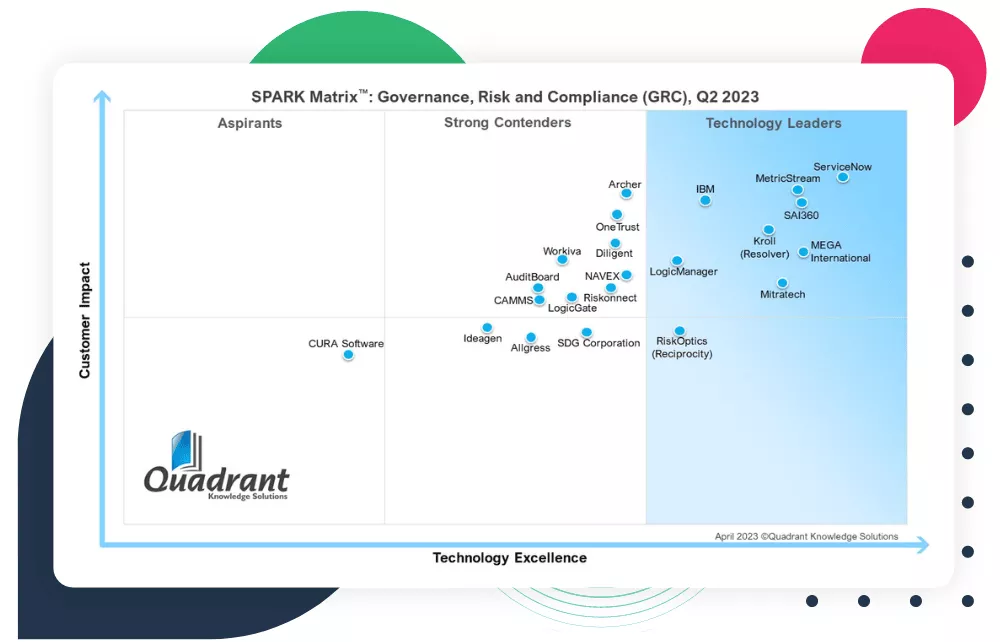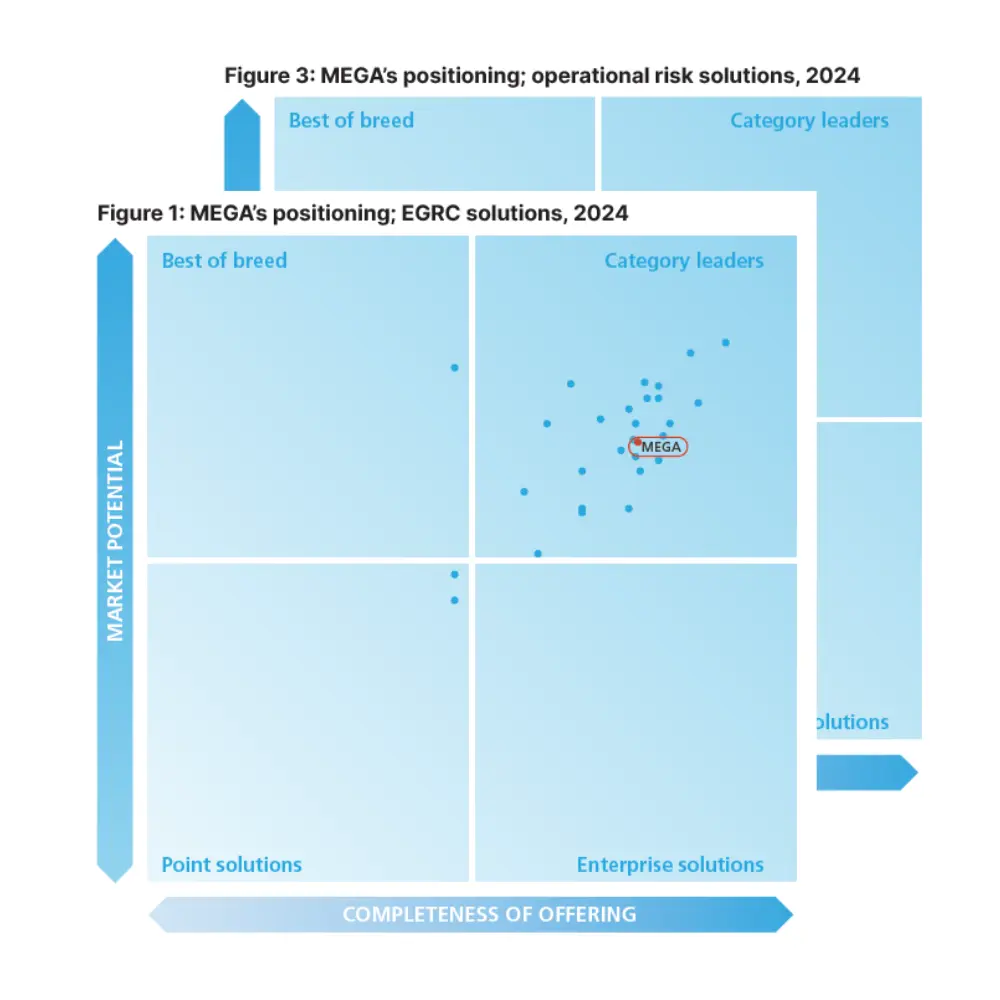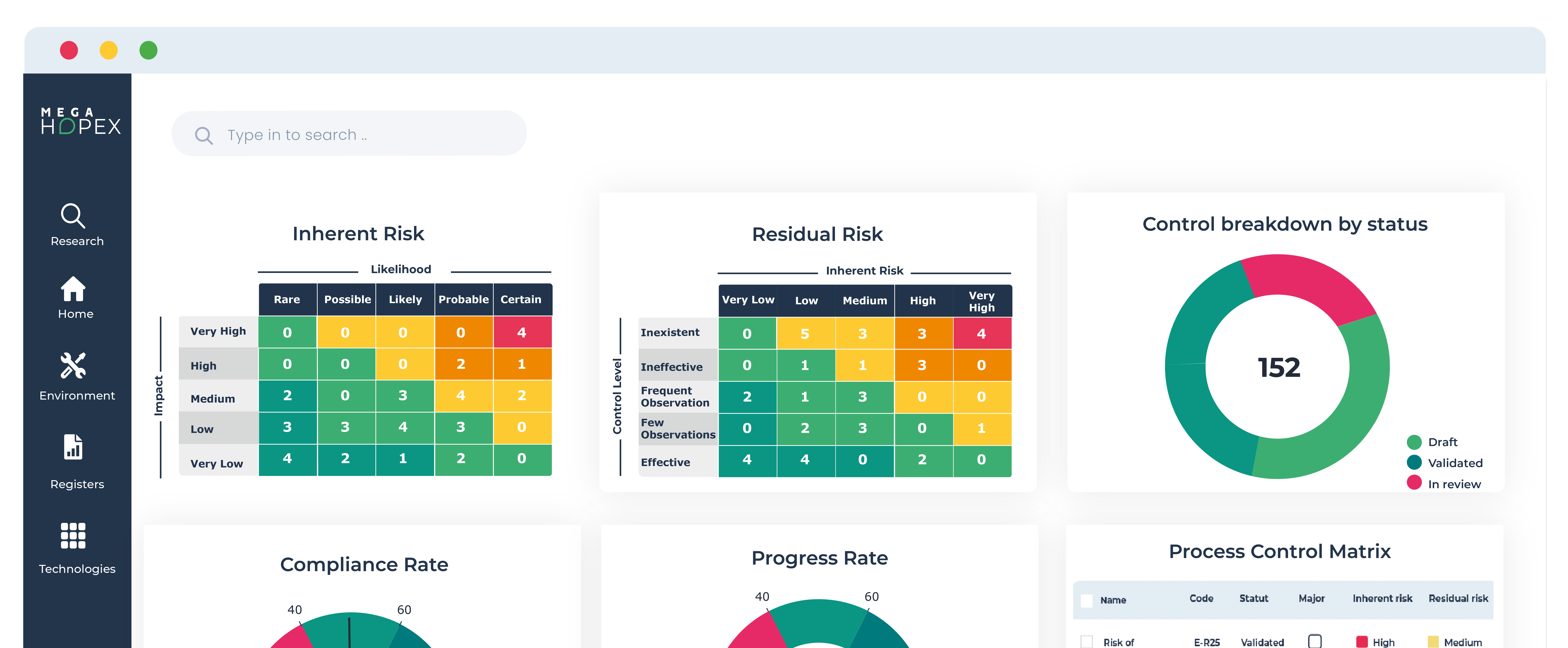
AI-Driven Risk Assessment in GRC: Enhancing Governance through Technological Intelligence
Enterprises in today's ever-changing business environment continually seek effective ways to manage their risks better.
Some early adopters have begun harnessing the formidable capabilities of artificial intelligence (AI) to analyze vast amounts of data to sharpen their risk assessment process.
However, AI's rapid development also challenges Governance, Risk, and Compliance (GRC) professionals. On the one hand, they can leverage this technology to refine their risk assessment methodology and elevate their organization's overall risk and compliance posture.
On the other hand, they must deal with the inherent risks of using this technology.
Understanding AI-Driven Risk Assessment
Defining the Synergy: GRC and AI
GRC can be defined as a framework that ensures organizations operate in conformity with regulations while effectively managing risks.
AI empowers machines to learn from data and make intelligent decisions.
The amalgamation of these two results in AI-driven risk assessment, where machine learning algorithms analyze vast datasets to identify potential risks, predict outcomes, and recommend strategies.
How AI can enhance risk management in GRC
AI technologies have the potential to revolutionize risk management practices in GRC. By leveraging AI algorithms and machine learning techniques, organizations can automate various aspects of risk assessment, such as data analysis, risk identification, and predictive modeling.
AI systems can process and analyze large volumes of data in real time, allowing for more accurate risk assessments and faster response times.
The Components of AI-Driven Risk Assessment
AI-driven risk assessment comprises various components: data collection, analysis, prediction, and decision-making.
It involves gathering data from diverse sources that can be internal, such as financial reports and market trends, and external, such as the internet, social media, etc…. AI algorithms then scrutinize this data, recognizing patterns and anomalies that might indicate potential risks to the organization.
What are the use cases of AI in risk management and compliance?
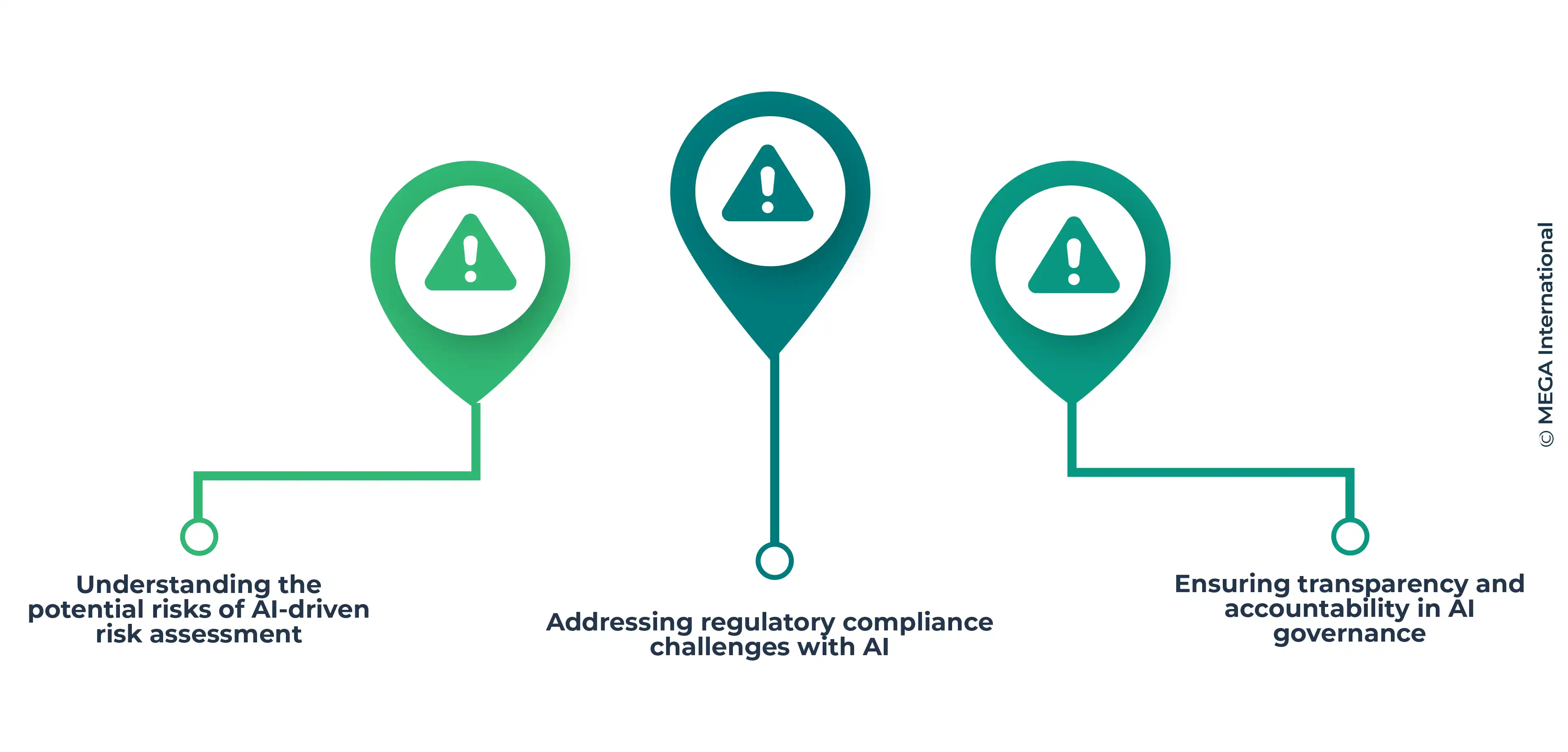
Leveraging AI for decision-making in risk management
AI can play a critical role in enhancing decision-making capabilities in risk management. Organizations can generate insights and predictions based on historical data and market trends using AI models and generative AI.
These insights can help organizations make informed decisions regarding risk mitigation strategies, resource allocation, and compliance measures.
Transforming compliance processes with AI
Given the complex and ever-changing regulatory landscape, compliance management is a significant challenge for organizations.
AI can help automate compliance monitoring processes by analyzing large volumes of data from various regulations and industry standards and identifying potential compliance breaches.
AI-powered compliance tools can streamline compliance processes, reduce manual workload, and ensure timely identification and reporting of compliance issues.
The Implications and Considerations
Data Privacy and Ethics
While AI-driven risk assessment brings immense value, it raises concerns about data privacy and ethics.
The algorithms require substantial amounts of data to function effectively, which might include sensitive information. Striking a balance between effective risk assessment and data privacy is crucial.
Human Oversight
AI-driven risk assessment should be seen as a complement to human expertise, not a replacement. Human oversight is essential to validate AI-generated insights and make decisions involving ethical considerations and nuanced contexts.
What are the risks associated with AI in GRC?
Understanding the potential risks of AI-driven risk assessment
While AI brings numerous benefits to risk assessment in GRC, inherent risks are associated with its usage.
AI algorithms are only as good as the data they are trained on, and biased, or incomplete data can lead to inaccurate risk assessments.
Related: Will AI Replace Cybersecurity Experts?
Organizations must ensure that the data used to train AI models is representative and free from biases to avoid making faulty risk assessments.
Addressing Data Privacy and Intellectual Property
AI often requires large datasets for training. These datasets may include personal and sensitive information. Ensuring this data is collected and used in compliance with privacy regulations (such as GDPR in Europe or HIPAA in the U.S.) is critical. Mishandling of data can lead to privacy breaches and legal consequences.
In addition, AI models can generate content, such as text or images, that may be subject to copyright. Determining what constitutes fair use of copyrighted material by AI models is a legal challenge still in debate.
Addressing regulatory compliance challenges with AI
AI can pose unique challenges regarding regulatory compliance. As AI systems become more complex and autonomous, ensuring they comply with regulations and ethical standards becomes essential.
Organizations must integrate AI governance frameworks into their GRC program to ensure transparency, accountability, and regulation compliance.
Ensuring transparency and accountability in AI governance
Transparency and accountability are crucial when it comes to the use of AI in GRC. Organizations must implement policies and mechanisms to monitor and audit AI decision-making processes to ensure they align with ethical standards, regulatory requirements, and organizational goals.
AI governance frameworks should address transparency, fairness, and privacy to foster trust in AI-powered risk assessment processes.
What are the benefits of AI-powered GRC solutions?
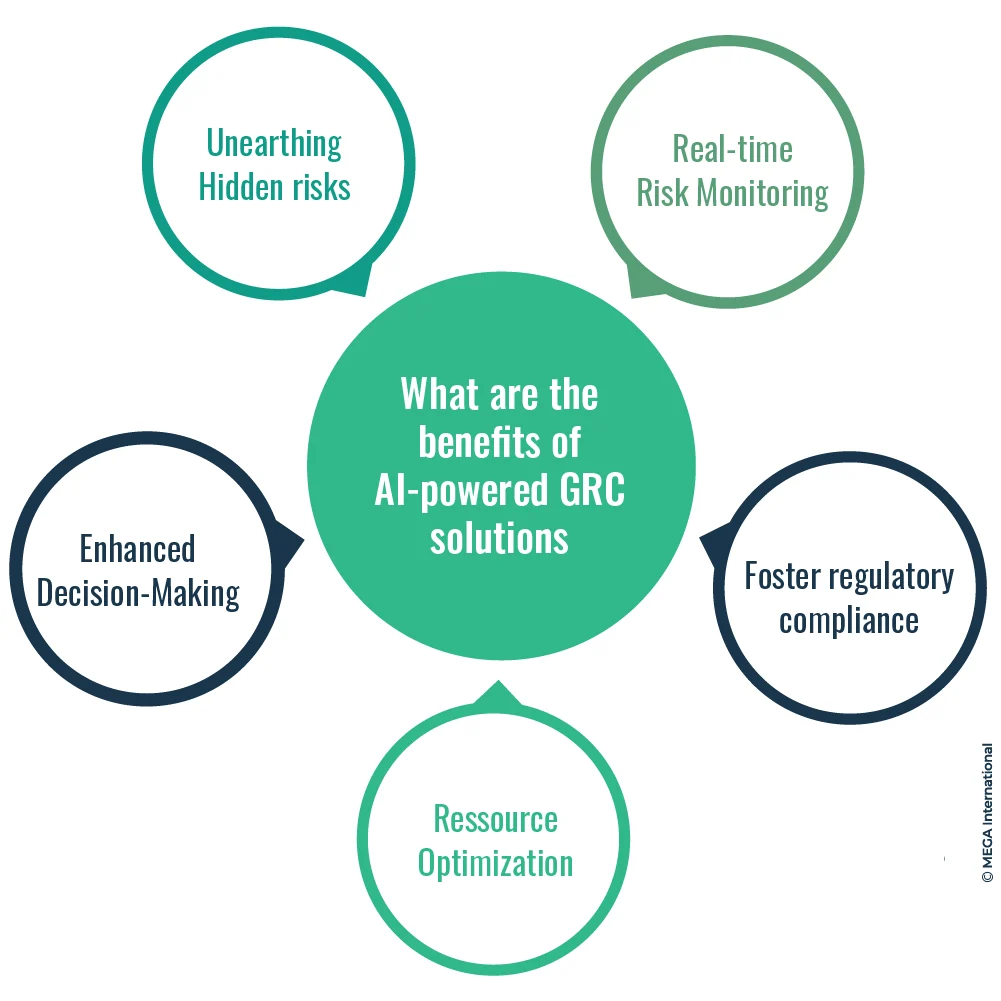
Unearthing Hidden risks
AI's strength lies in its ability to uncover hidden patterns within data that might elude human analysis. By identifying these patterns, AI can predict potential risks with a higher level of accuracy, enabling organizations to address them proactively.
Real-time Risk Monitoring
Traditional risk assessment often involves periodic campaigns, allowing risks to materialize between assessments. AI-driven risk assessment offers real-time monitoring, sending alerts when unusual activities or deviations from the norm are detected.
Foster regulatory compliance
AI-powered compliance tools can continuously monitor regulatory changes, assess compliance risks, and provide real-time alerts and recommendations.
Enhanced Decision-Making
AI provides GRC professionals with data-backed insights that facilitate informed decision-making. With AI's assistance, organizations can assess the potential impact of different decisions on risk profiles and compliance efforts.
Resource Optimization
By automating risk assessment processes, AI allows GRC teams to allocate resources more efficiently. This, in turn, leads to better risk mitigation strategies and improved compliance measures.
The Future of AI-Driven Risk Assessment
As artificial intelligence continues its rapid evolution, its role within the realm of GRC is set to expand even further.
Predictive analytics, coupled with refined natural language processing and bolstered by advanced machine learning algorithms, will collectively usher in a new era of risk assessment accuracy and agility.
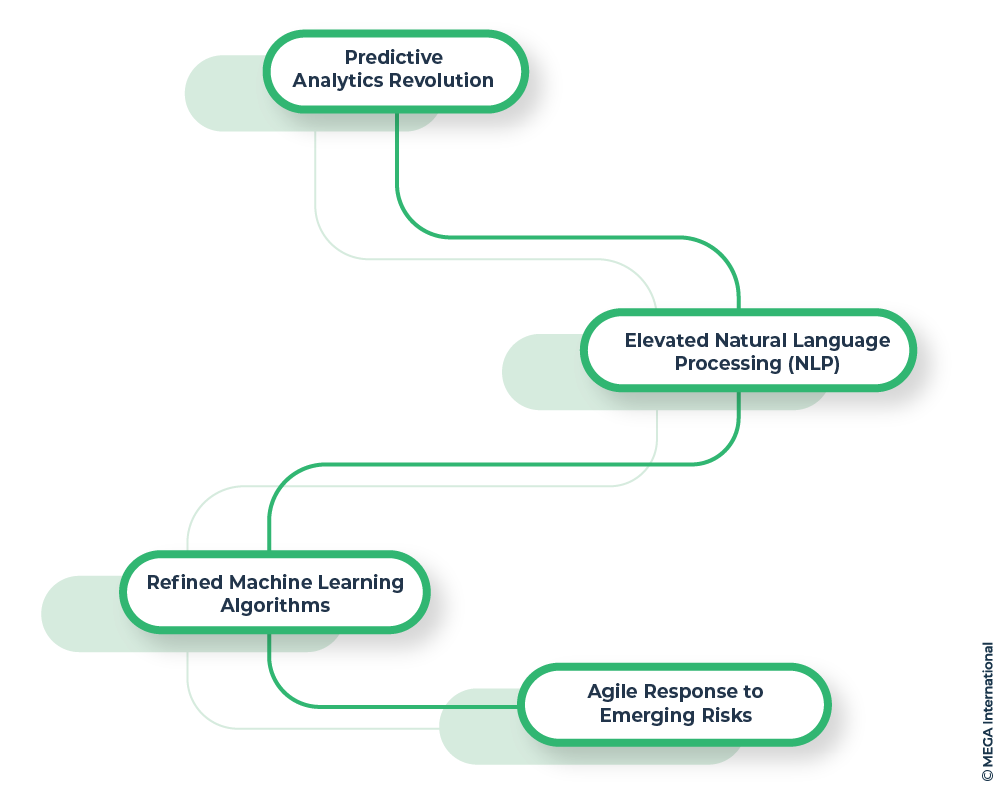
- Predictive Analytics Revolution Shortly, predictive analytics will undoubtedly take center stage. AI-driven risk assessment will harness historical data to anticipate potential risks and their outcomes. This proactive approach will empower organizations to identify risks and craft preemptive strategies to mitigate them effectively.
- Elevated Natural Language Processing (NLP) The future will see NLP reaching new heights in AI-driven risk assessment. Machines will be better equipped to understand and interpret nuanced textual data, be it compliance documents, industry reports, or even social media discourse. This enhanced comprehension will enable more comprehensive risk evaluation and prediction.
- Refined Machine Learning Algorithms As machine learning algorithms continue to mature, their ability to detect intricate patterns will become even more sophisticated. This refinement will enable AI to navigate complex data landscapes and pinpoint subtle correlations that might escape human observation. Consequently, a risk assessment will attain unparalleled precision.
- Agile Response to Emerging Risks The dynamic nature of risks requires an equally agile response. Future AI-driven risk assessment models will be able to adapt to evolving risk landscapes swiftly. This adaptability will ensure that organizations stay well-equipped to address emerging threats in real time.
Summary
In closing, the future of AI-driven risk assessment is undeniably promising, but it requires robust governance.. As technology surges ahead, GRC professionals can anticipate a landscape where AI not only assists in identifying and mitigating risks but also helps them remain ahead of the curve. At the same time, they will have to address the many risks of using IA to fortify their risk management strategies and navigate the intricacies of business with heightened confidence.
Stay tuned for the unfolding chapters of AI-driven risk assessment, where technology and human insight converge to create a safer and more secure business environment.
FAQs
AI-driven risk assessment is the utilization of artificial intelligence technologies to analyze data, predict potential risks, and recommend risk mitigation strategies within the context of Governance, Risk, and Compliance (GRC) practices.
No, AI doesn't replace human judgment; it enhances it. Human oversight is essential to interpret AI-generated insights, validate predictions, and consider ethical and contextual factors.
AI-driven risk assessment optimizes resource allocation by automating processes, allowing GRC teams to focus on strategic risk management rather than manual data analysis.
Challenges include managing data privacy, ensuring the ethical use of AI, and balancing automation and human expertise.
Ensure efficient risk management and operational resiliency
Governance, Risk and Compliance Related Content
Enhance operational resilience using integrated risk management
MEGA HOPEX for GRC
Request a demonstration of HOPEX for GRC, and see how you can have immediate value of your projects.







